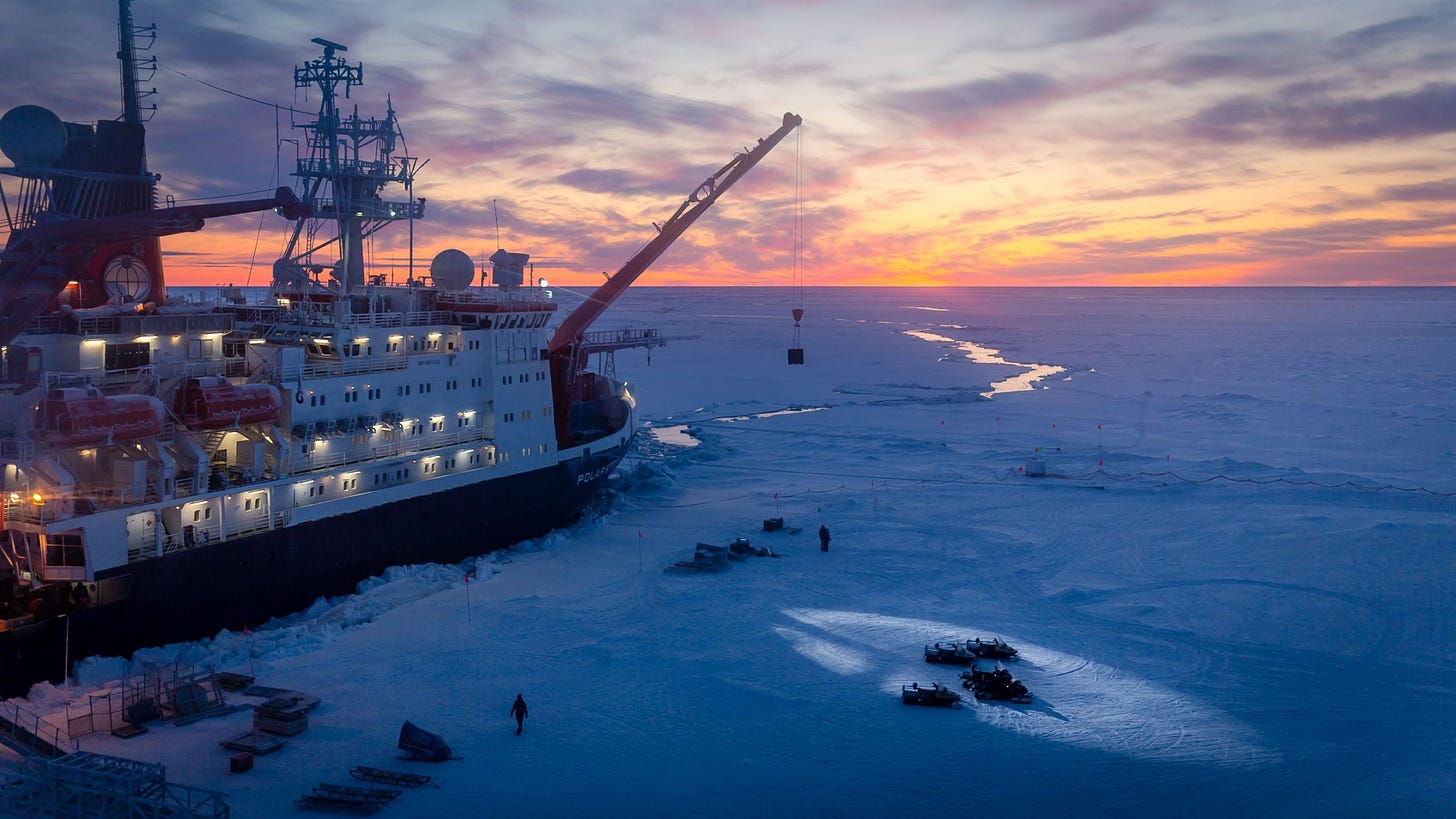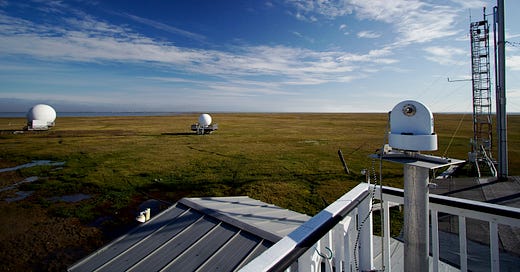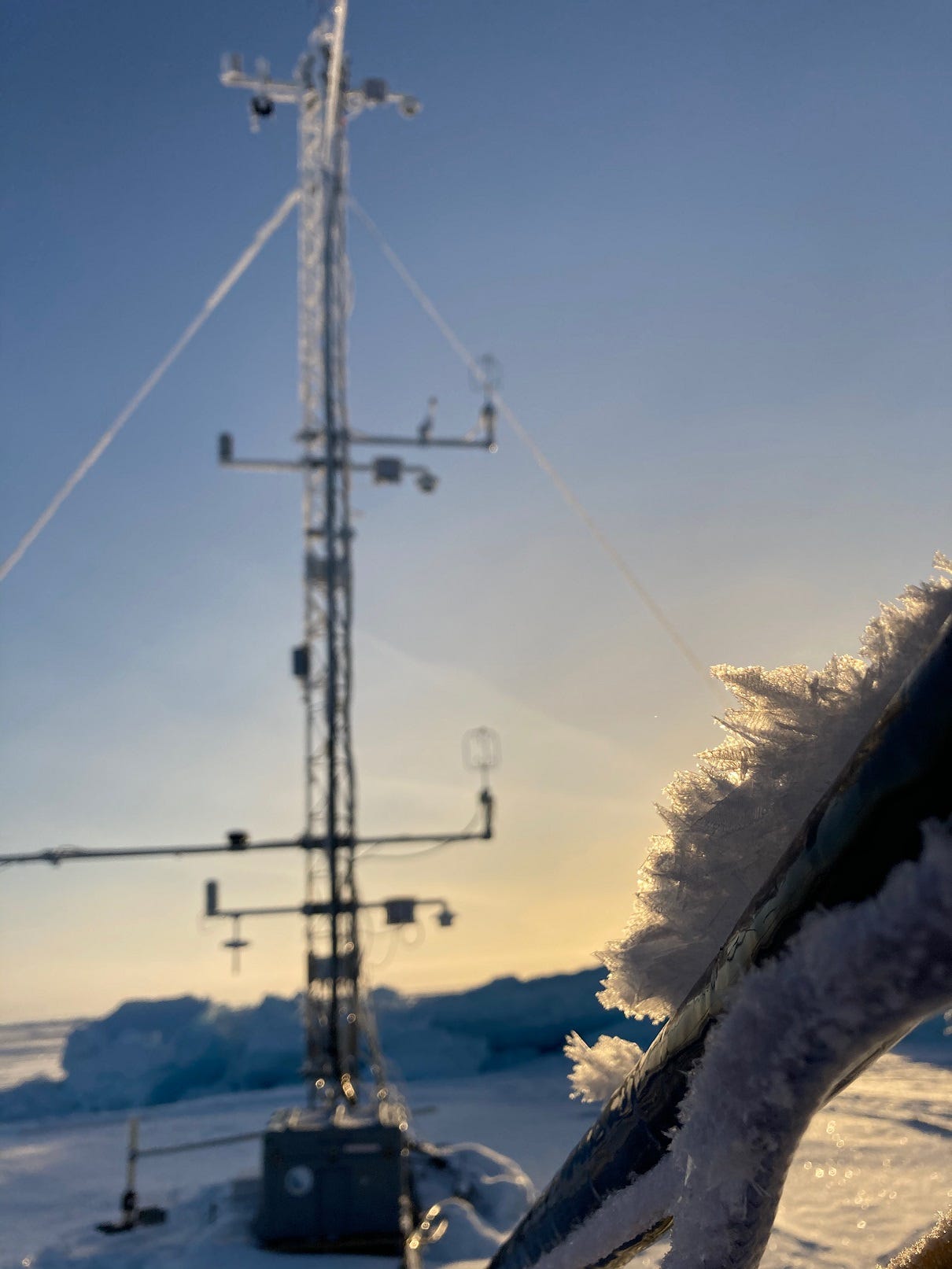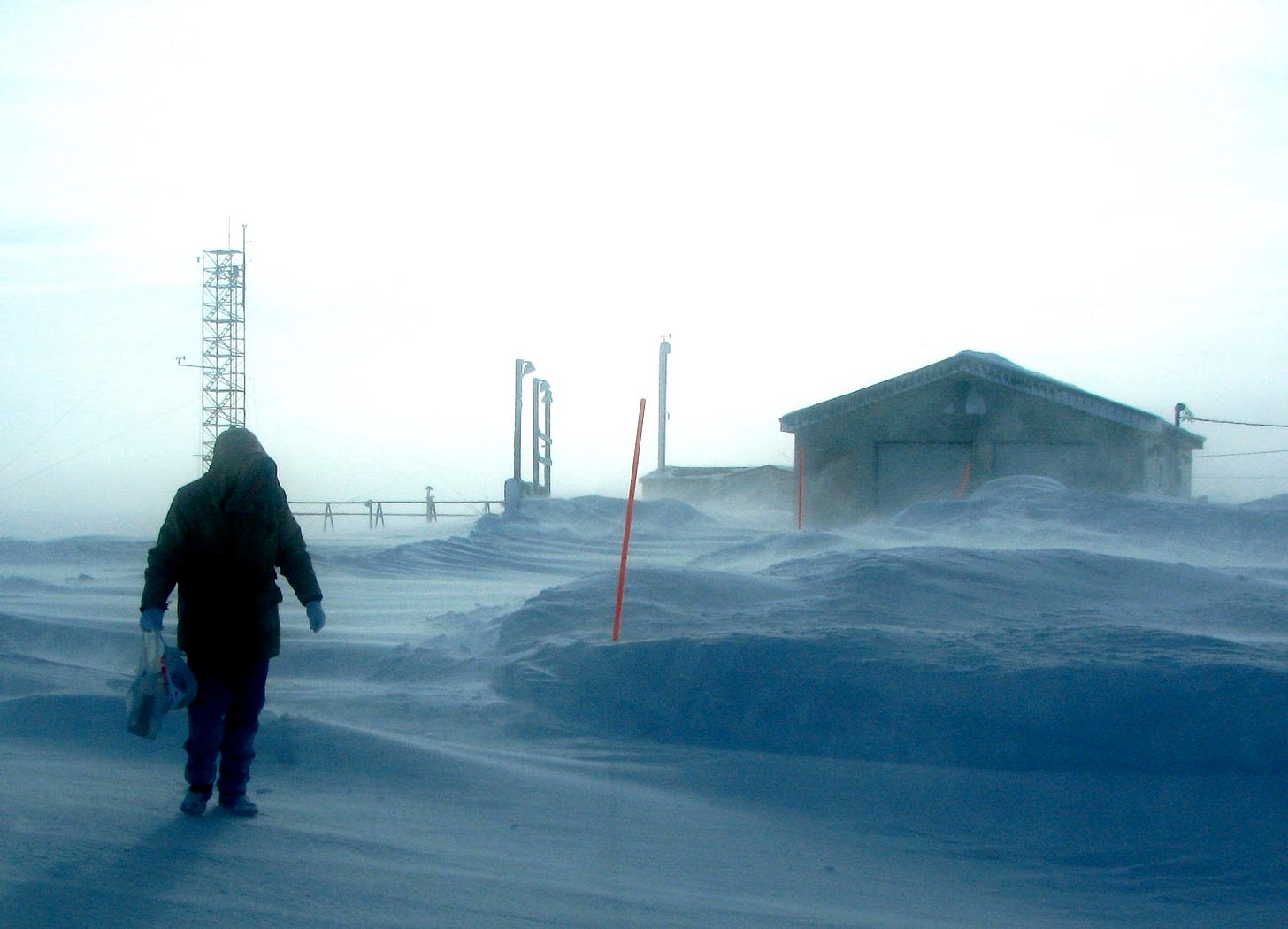A Beef Between Human Beings and Physics, part two
5/12/22 – A review of the recent IPCC report on climate mitigation, completed
Hello everyone:
The war in Ukraine is, from a certain perspective, an Anthropocene beast. Fossil fuels have given Putin’s Russia excessive leverage over European democracies and have funded its outsized military. The war impacts the global grain supply in ways that spur civil strife in impoverished or climate-addled regions. This is how cracks form, and widen, in the planet-wide network we call civilization.
For those of you wondering how our descendants might view this act of Russian fascism, here is an opportunity to help ensure that what’s happening on the ground is included in the history books. Documenting Ukraine is a project created in part by Prof. Timothy Snyder, the historian on the region whose Ukraine work I’ve highlighted here before. Read his post here about the effort to fund a wide range of assessments – from historians, anthropologists, scientists, archivists, writers, photographers, and more – that will bear witness. They have funded a few dozen grants already and are aiming for a hundred by the end of the month. Documenting Ukraine seems attentive to the environment too, judging by its funding of a project by ecologists to monitor the war’s damage on marine ecosystems.
As always, please remember to scroll past the end of the post to read this week’s curated Anthropocene news.
Now on to this week’s writing.
My friend Kevin Posman, a researcher at the Bigelow Laboratory for Ocean Sciences here in Maine, was kind enough to offer me a gift when this Field Guide had its first anniversary. He gave me the glass vial you see in the GIF above. It’s an air sample from the Barrow Atmospheric Baseline Observatory in Utqiaġvik, Alaska, the northernmost point of the U.S.. The label notes that the CO2 level at the moment was 417.86 ppm. You might be able to see by the label that the average reading when the Barrow Observatory first began sampling back in the early 1970s was around 325 ppm. At the dawn of the industrial revolution the level was about 280 ppm. The last time Earth’s atmospheric CO2 levels were over 400 ppm was 3 to 5 million years ago in the Pliocene epoch, when sea levels were 100 feet higher, horses and lions inhabited the Arctic, and humans did not exist.
In April, 2019, Kevin made the journey to the Barrow observatory – “a pilgrimage to a scientific holy site,” as he called it – to test some sampling instruments his team at Bigelow had designed to use on the remarkable 2019/2020 MOSAiC scientific expedition to the Arctic. MOSAiC was the largest polar expedition in history, and took place over an entire year aboard the research icebreaker Polarstern, which was deliberately frozen into the sea ice near the North Pole.
MOSAiC science teams worked in camps set up on the sea ice around the ship, with safety personnel keeping watch for fracturing ice and curious polar bears. The MOSAiC expedition involved hundreds of researchers from 20 countries working together “to take the closest look ever at the Arctic as the epicenter of global warming and to gain fundamental insights that are key to better understand global climate change.”
Kevin was part of the atmospheric science team, and sent some beautiful notes home about his experience in the haunting beauty of the Arctic. Here’s an excerpt of one he wrote after a storm swept through:
The storm also brought the first signs of winter. The long awaited freeze-up has begun. During the intensive sampling period we witnessed the turquoise melt ponds fade to a steel gray. Snow came next, about 10cm, which obscured the dynamic ice surface and created a beautiful white, wind-scoured desert. Drifts form around every object and footsteps disappear in minutes. Walking off-path has become treacherous.
The sun is low in the sky, like a permanent sunset. It makes a slow, golden circle around us, drawing ever closer to the horizon. It feels like you can watch it get lower by the day. The arctic sunset is only a week or two away. The past few days’ brilliant sunlight has made for gorgeous sights despite the new cold. The other day the conditions were perfect for frost formation. I’d never seen anything like it. Thin inch-long crystals coated every surface, like thousands of glass butterflies sitting on a wire.

The expedition provided reams of data that researchers will be poring over for many years to come, but there was an obvious, more visceral finding that shaped the expedition itself. The old, dense, thick sea ice that has characterized much of the Arctic for millennia was hard to find. That’s the result of our digging up millions of years of fossil carbon and burning it, like a supervolcano, in the geologic blink of an eye.
What I want to emphasize here, in re-introducing my list of bullet points from the IPCC Working Group III report on climate change mitigation, is the work of the scientists behind the report. MOSAiC was a once-in-a-lifetime, high-profile scientific expedition that has changed the world of Arctic science. For a better view of what data collection usually means, let’s go back to Utqiaġvik, the Barrow Observatory, and my vial of air.
A “hardcore outpost,” as Kevin says, the observatory is maintained year-round by just two people. These are “science monks, working in obscurity but responsible for continuously generating one of the most important datasets we have.” Like the hundreds of scientists I encountered during my decade in Antarctica, each one leaving their home in the warm world to pull some raw data from the ice, the researchers at Barrow cope with isolation, 160 days below freezing each year, and 66 days without a visible sun. Kevin told me that “the prize you get for visiting Utqiaġvik is invaluable: devastating insights into atmospheric chemistry, and a tiny vial of air.”
This is just one example of the background work of climate change assessment, the quiet gathering of data that shows up in myriad ways in the reports that, taken together, form the bricks in the foundation of the solid science which underlies our understanding of this rapidly changing world.
I’ve told you Kevin’s story because I’d like you to think about the extraordinary work, thought, devotion, and lives behind each of the findings in the list below.
As a reminder, the IPCC Working Group I report, out last summer, detailed the physical basis for the climate change we’re experiencing and expecting. The WGII report, out in February, detailed the impacts of climate change on the human and natural worlds. This new report, on climate mitigation, is intended to map a way forward out of this mess by assessing how much we’ve done so far and how much remains to do.
Last week I offered bullet points on the report’s first section, Recent Developments and Current Trends. This week zeroes in on necessary systemic changes, the links between climate mitigation and development goals, and conclusions on how we do all of it better and faster.
System Transformations to Limit Global Warming
To restrict warming to 1.5°C or even 2.0°C we need to enact immediate, rapid, and permanent cuts to greenhouse gas (GHG) emissions across all sectors. (We’ve already warmed 1.2°C since pre-industrial levels.)
Emissions must peak soon and begin to decline by 2025 at the latest.
Limiting warming to 1.5°C requires cutting emissions of all GHGs roughly in half by the 2030s.
Current GHG emissions, if maintained, will warm the planet by about 3.2°C by 2100. This would be catastrophic for the current balance of life on Earth.
Current commitments for reductions made by nations, if met, would still heat the Earth by at least 2.2°C by 2100.
We’ll have to reach net zero emissions by 2050 for the 1.5°C pathway, or by 2070 for 2.0°C.
There is no room whatsoever for building more fossil fuel infrastructure. Just to be clear: “The continued installation of unabated fossil fuel infrastructure will ‘lock-in’ GHG emissions. (high confidence)”
Net zero by 2050 requires using about 95% less coal, 60% less oil, and 45% less gas by 2050.
Rapid reduction of methane emissions now will help reduce peak warming in either scenario.
Reaching net-zero CO2 emissions from the industrial sector will be particularly challenging. The entire industrial ecosystem (note the irony of that term) will need to change, from energy sourcing to demand reduction, with a long-term goal of reusing materials rather than relying on a constant influx of raw material.
Cities, as highly-managed spaces, are opportunities for far-reaching reduction in emissions. Net-zero emissions are possible, but transportation and buildings must be reimagined for high-efficiency and low-emissions results. Strategies for urban carbon uptake and storage must be incorporated, and the supply chains which reach far beyond urban areas must be redesigned.
If we prioritize high-efficiency, low-emissions buildings (both retrofitting and new construction) now through policy and funding, then this sector can begin the necessary road to net-zero. If we fail to prioritize efficiency and low emissions for new construction, then new buildings will lock in emissions and their impacts for decades to come.
Good progress, relatively speaking, has been made in land-based transport. The sooner the world’s vehicles are mostly electric and powered by low- or no-emissions energy, the better.
For heavy land transport, shipping, and aviation, there is the possibility of sustainable biofuels, “green” hydrogen, or synthetic fuels in the transition away from fossil fuels, but only if costs of these technologies come down and if they live up to the promise of sustainability.
Reimagining transport will have other benefits for air quality, human health, and ecological health.
Transformations of agriculture, forestry, and other land uses hold great promise for emission reductions – not to mention innumerable benefits for biodiversity – but those transformations will be complicated by numerous factors: “the impacts of climate change, competing demands on land, conflicts with food security and livelihoods, the complexity of land ownership and management systems, and cultural aspects.”
Strictly protecting forests and wetlands from destruction for agriculture or industry offers a major opportunity to reduce emissions.
Progress has been slowed by “incumbent fossil fuel interests” which often work to thwart good climate policies. Political polarization is the result of sophisticated disinformation campaigns.
Reducing our personal contributions to climate change – what the IPCC calls “demand-side mitigation” – will necessitate changing how we relate to the infrastructure of civilization. This is not just cars, roads, buildings, public transport, and other technologies, but also food and work. To be clear, this means large-scale political, cultural, and behavioral change. It will feel less like change, however, if we want to do it.
These personal changes are absolutely necessary in those nations most responsible for historic and current emissions. The wealthiest homes, communities, cities, and nations can make the greatest difference and therefore have the greatest responsibility.
Changing our behavior on a massive scale could reduce emissions in some sectors by as much as 70% by 2050.
“It is the richest people and wealthiest nations that are heating up the planet,” as the Times wrote. The wealthiest 10% of households are responsible for a third to a half of global emissions.
Avoiding the fossil fuel trap is crucial for sustainable development. Global emissions will not significantly increase if less developed nations continue to develop through access to clean energy sources.
Limiting global temperature rise to 1.5°C will be impossible without carbon capture. As much as possible, this should be done with natural systems rather than technology. Any emphasis on removing CO2 with machines tends to encourage industry to lean on that rather than on reducing emissions.
There are many ecologically beneficial ways to store CO2 naturally: protecting and replanting forests, restoring wetlands and mangrove forests and kelp forests, and increasing soil sequestration, to name a few.
It is more economical to strictly reduce emissions now rather than to pay for their consequences later: the projected costs of limiting warming to 2.0°C may limit global economic growth by 1.3% to 2.7% by 2050 but those costs will be exceeded by the economic benefits of not ravaging the planet.
Linkages between mitigation, adaptation, and sustainable development
Faster and better responses to climate change mean improved progress toward sustainable development. Alternatively, the longer we wait to respond appropriately the more harm will be done to communities vulnerable to rising seas, heat events, and other climate change impacts.
The goals for the UN 2030 Agenda for Sustainable Development will be useful to evaluate progress on responsible climate action.
Developing countries have limited economic, social, and institutional resources to rely on in mitigating or adapting to climate change. As climate change worsens, so will the vulnerabilities of less developed nations.
Ensuring that responses to climate change do not increase harm to the environment will require careful planning, with assistance as necessary from nations most responsible for climate change and most able to fund mitigation and adaption.
Attention to global economic and social equity in the response to climate change is necessary to develop more effective responses. Decision-making must include the more vulnerable nations and populations in order to build trust and create better outcomes.
Strengthening the Response
We have mitigation solutions now which are technically viable, cost-effective, and supported by the public, and that can be applied at a global scale. These include solar and wind energy, electrification of urban systems, urban green infrastructure, energy efficiency in all sectors, demand side management, improved management of forests and grasslands and reduced food waste and loss.
It is vital that climate mitigation be harnessed to development goals in less developed countries. Doing so will increase the speed and depth of emissions reduction.
Policy matters. Ideally, policy aimed at climate governance is spread throughout government in order to create more effective, efficient, and synergistic results. Government should look beyond its departments to work with “civil society actors, political actors, businesses, youth, labour, media, Indigenous Peoples and local communities.”
Effective regulations and economic incentives are already in place in some nations, but they are needed everywhere and in greater numbers. Climate mitigation policies should be grouped into effective packages rather than applied singly.
We need an acceleration of financial cooperation to speed up the creation of solutions around the globe. Governments, financial institutions, organizations, and private investment are failing to invest anywhere near enough to meet climate mitigation goals, particularly in less developed nations.
Investment in climate mitigation will need to be 3 to 6 times higher in 2030 than it is now to keep warming below 2.0°C.
International cooperation is essential for success if we’re going to meet climate goals. Frameworks have been created by the Kyoto Protocol, the Paris Agreement, etc., but these have been insufficient to close the massive gaps between words and deeds. Cooperation will be necessary at all levels, from international to national to regional to local.
Some of what you just read seems like old news, I’m sure, but the importance here is that hundreds of world-class scientists are confirming what you already knew about the reality we inhabit. Now we need to push policy to match reality, knowing that science has pointed us in the right direction.
Finally, I’d like to remind you that the title for this week’s writing comes from Bill McKibben, a writer and environmental activist every bit as devoted to the cause as the most committed scientists. McKibben began leading the climate fight in the 1980s, decades before civilization was paying much attention. He saw the world we were making and has spent his life trying to alter our path.
Future generations will look back on McKibben’s organizations, books, articles, blogs, and speeches in the same way they look at these IPCC reports. They are each, to use Kevin’s description of my little vial of air, “a marker in our continued journey into an unknown world.”
Thanks for sticking with me.
In curated Anthropocene news:
From the Guardian, a brilliant (and long) essay on the importance of understanding soil for finding our way out of our current planetary mess and into a future of well-fed humans and a vibrant Earth.
From the BBC, a plea to mine the rare earth minerals in our discarded gadgets. It is absurd, wasteful, and irresponsible to maintain our system of throwaway technology even as we scour the Earth for more raw minerals. Nations need new policies mandating mineral recycling.
From SciTechDaily, the development of an enzyme that eats plastics efficiently enough that it may be scalable to industrial applications. The material that made up the dissolved plastic can then be used again, which suggests a possible circular economy for this most difficult of modern substances.
Also from SciTechDaily, new findings that show that, acre for acre, wetlands are 5 times better than forests and up to 5,000 times better than the ocean for storing carbon. More importantly, the research demonstrated how to restore wetlands most effectively.









